A well designed and smoothly functioning EHR, with minimal distractions and maximum productivity, is what a provider wants; for a poorly designed EHR, with flaws, jitters, and glitches, will only enslave him.
Technology has long been considered a blessing for humanity for it not only saves us from innumerable hardships and ambiguities but also improves our efficiency and productivity. However, technology can become an even bigger nuisance if it doesn’t work in its intended manner – because of the complexities that one might encounter due to its malfunctioning. EHR systems are a product of progressive improvements in technology and the need for smarter solutions regarding data management. Providers, these days, have so much on their desk that making manual entries of their patients would be the last thing they’d want to do.

To keep doctors away from this redundant and burdensome work and let them focus on what they best do i.e., provide requisite health care quality. Health IT experts have devised an automated system of recordkeeping i.e., the EHRs. When Obama announced this system of EHRs, he was adamant that this mechanism would annually save $80 billion of national exchequer, by reducing the need for any paperwork in healthcare, as well as minimizing the likelihood of human errors. However, ten years and $36 billion later, this EHR system is still in the state of a fiasco – one of those occasions when digitalization and the IT revolution didn’t exactly go as intended.
Read More: Benefits of specialty EHR
Just recently, a coalition of reporters from Fortune Magazine and Kaiser Health News (KHN) conducted an investigation to affirm as to how efficient is the current system of EHRs is and their findings are pretty grim. According to the Fortune-KHN report, EHRs are responsible for thousands of critical, even lethal, errors. EHRs have caused avoidable deaths due to a lack of doctor-patient interactions and are yet to provide any substantial cost cuts to the doctors. One of the most horrific incidents, as quoted by the Fortune-KHN report, took place when a software glitch caused delays in getting patient reports from the lab, which not only postponed the patient’s treatment but also caused her irreversible brain damage – she ultimately died of a brain aneurysm. If this glitch in interoperability hadn’t taken place and doctors had received those lab reports in time, the patient might have been saved from this agonizing atrocity.
With so many patients’ lives at stake, a faulty EHR only adds to the frustration of a doctor. Many doctors have confessed that using the EHR system not only feels like an unnecessary administrative burden but also increases their likelihood of burnouts. According to a survey conducted by Merritt Hawkins, a physician recruiting firm, almost 77% of the doctors have reported symptoms of burnout and have pointed out the faulty EHR as one of the primary causes of this anguish. These recurring incidents of burnout have not only reduced their job satisfaction but is also forcing them to consider other career options. According to the Physicians Foundation, around 45% of the doctors are on the verge of switching their career paths and as many as 50% of the existing practitioners will not let their children get into medical schools. According to the Association of American Medical Colleges, the healthcare system of the US is projected to be 122,000 doctors short by the year 2032, considering population growth and other demographic factors. In such a scenario, losing existing and experienced providers would be the last thing the $3.7 trillion American healthcare system can afford, in the grand scheme of things. Also, by implementing EHR systems into their practice, very few doctors have reported instances of cost reduction. According to the Association of American Medical Colleges, only 10% of the doctors have reported savings as a result of EHR, whereas the remaining doctors have reported no savings, or even cost increments, in their practice as a result of inculcating EHR into their practice.

Not only the doctors, but even the patients have reported dissatisfaction with the efficiency of the system. According to the Fortune-KHN report, 21% of the patients have reported errors in their EHR Portal – sometimes as serious as getting wrong prescriptions. The prescriptions may show wrong, even dangerously high, dosages of medicines and false start and stop dates for the entire course. According to the findings by the Leapfrog Group, in almost 40% of the instances, the EHR systems fail to identify and highlight dangerous drug orders.
The transmission of sensitive information has always been a burning question whenever we talk about data security and privacy. Even though the EHRs are bound to comply with the HIPPA (Health Insurance Portability and Accountability Act of 1996) legislation, glitches and flaws within the software can never be ruled out. According to Integracon Technologies (US), phishing attacks, malware and ransomware, cloud threats and encryption blind spots are some of the biggest threats to the EHR systems. Within the last five years, hospitals in Russia and the UK have reported multiple malicious cyber-attacks to their medical records. Even the EHR service providers are also at a constant risk against Trojans and other malware. Despite following all prescribed protocols of data safety, the threat of data breach can never be ruled out.

However, in spite of all the negative statistics with regards to implementing EHR, a staggering 96% of the hospitals in the US are using EHR systems, which means that providers have accepted and inculcated this system into their practice. Using an EHR not only offers them timely reimbursements but also streamlines their RCM. Doctors have shown faith in EHR systems EHR service providers must ensure that their final products are rigorously tested out. Doing so will not only be beneficial for the EHR service providers’ sustainability in the market but will also simplify the healthcare system of the US.




More Stories
The Future of Radiology Information System
How To Buy EHR Software in 6 Steps
Information security guide for small healthcare businesses